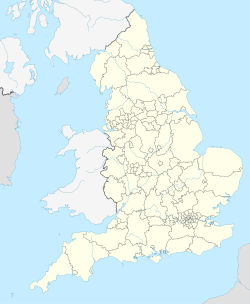| House in the Clouds | |
|---|---|
 House in the Clouds | |
| General information | |
| Location | Thorpeness, Suffolk, England |
| Website | |
| Official website | |
The House in the Clouds is a water tower built to incorporate a residential home, in Thorpeness, Suffolk, England. The structure was built in 1923 to receive water pumped from Thorpeness Windmill, [1] [2] and was designed to improve the looks of the water tower, disguising its tank with the appearance of a weatherboarded building more in keeping with Thorpeness's mock Tudor and Jacobean style, except seeming to float above the trees due to its height. [3] [4]
Contents
The original capacity of the water tank was 50,000 imperial gallons (230,000 L) but during the Second World War, the House in the Clouds was accidentally hit by gunfire from anti-aircraft guns based at Thorpeness. The water tank was repaired using its own steel, which resulted in a reduced capacity of 30,000 imperial gallons (140,000 L). [5] In 1977, the water tower was made redundant by a mains water supply to the village, and additional living space was created. In 1979, the main water tank was removed to fully convert the building into a house.
The building currently has five bedrooms and three bathrooms; it contains a total of 85 steps from top to bottom and is around 70 ft (21 m) high.
It has been a Grade II Listed Building since 1995. [6]

